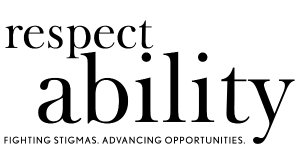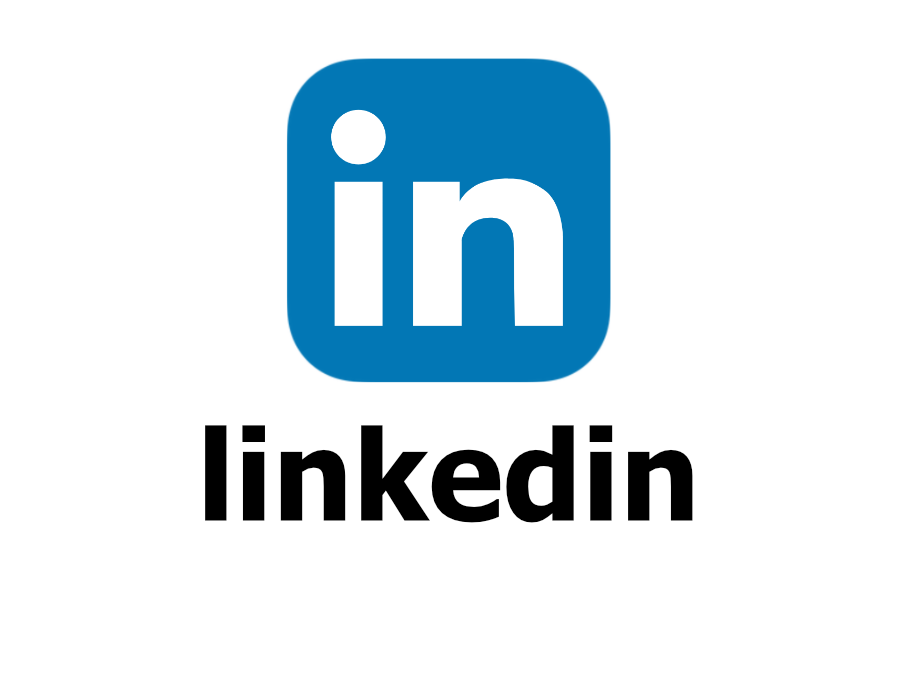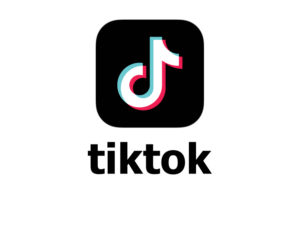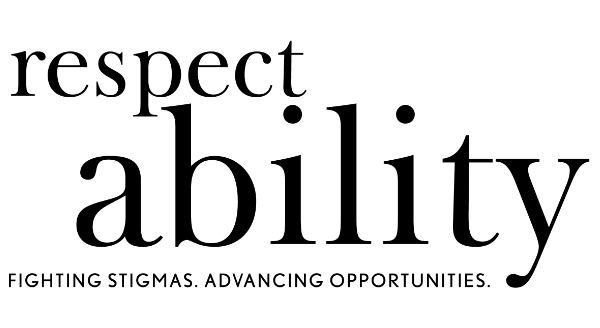Index:
What is considered a disability?
What is the Americans with Disabilities Act (ADA)?
What is ableism?
What is an inclusion rider? How can they help people with disabilities in Hollywood?
What is person-first language? Does everyone use it?
What does it mean to “reclaim” a word, and why is reclaiming important?
How does intersectionality play into all of this?
What are some concrete steps to ensure we are inclusive?
How can I communicate that I am welcoming of people with disabilities?
How do I ensure my events are inclusive and accessible?
What is some sample inclusion language to use for accommodations?
How do I ensure my space is accessible physically?
How do I ensure my exterior space is accessible physically?
What signage do I need to be more accessible?
How do I ensure my website is fully accessible?
How do I add captions to my online videos for free?
How do I ensure my other materials are accessible?
How can I tell if an animal is really a service animal and not just a pet?
What do I need to know regarding hiring employees with disabilities?
How can I be more inclusive in my hiring process?
What is an example of non-discrimination language to include?
What tax and other incentives do employers have to hire people with disabilities?
Where can I look to find examples of companies who are effective at including people with disabilities?
What is considered a disability?
According to the Americans with Disabilities Act, an individual with a disability is a person who (1) has a physical or mental impairment that substantially limits one or more “major life activities,” (2) has a record of such an impairment, or (3) is regarded as having such an impairment.
The ADA does not set forth an exclusive list of conditions it covers. The regulations define “physical or mental impairment” as any physiological disorder or condition, cosmetic disfigurement or anatomical loss affecting one or more body systems, such as neurological, musculoskeletal, special sense organs, respiratory (including speech organs), cardiovascular, reproductive, digestive, genitourinary, immune, circulatory, hemic, lymphatic, skin and endocrine. The regulations also cover any mental or psychological disorder, such as intellectual disability, organic brain syndrome, emotional or mental illness and specific learning disabilities.
Although there is not an exhaustive list of disabilities under the ADA, the regulations identify medical conditions that would easily be considered a disability within the meaning of the law. These medical conditions include:
- Auditory processing challenges
- Autism
- Bipolar disorder
- Blindness
- Cancer
- Cerebral palsy
- Deafness
- Diabetes
- Epilepsy
- HIV infection
- Intellectual disabilities
- Major depressive disorder
- Mobility impairments requiring the use of a wheelchair
- Multiple sclerosis
- Muscular dystrophy
- Obsessive-compulsive disorder
- Partial or completely missing limbs
- Post-traumatic stress disorder
- Schizophrenia
- Sensory processing challenges
Major life activities are functions like caring for yourself, bathing, dressing, shaving, preparing a meal, going to the restroom, performing manual tasks, eating, sleeping, standing, walking, lifting, reaching, bending, seeing, hearing, speaking, breathing, learning, reading, concentrating, thinking, communicating, interacting with others and working.
As a result of the Americans with Disabilities Amendments Act, major life activities now include the operation of any major bodily function, like functions of the immune system, normal cell growth, digestive, bowel, bladder, neurological, brain, respiratory, circulatory, endocrine and reproductive (procreation) functions, among others.
In the context of the ADA, “disability” is a legal term rather than a medical one. Because “disability” has a legal definition, the ADA’s definition of disability differs from how disability is defined under some other laws.
What is the Americans with Disabilities Act (ADA)?
The ADA is the nation’s primary disability nondiscrimination law. It became law in 1990. It is a civil rights law that prohibits discrimination against individuals with disabilities in all areas of public life, including jobs, schools, transportation and all public and private places that are open to the general public.
The purpose of the law is to make sure that people with disabilities have the same rights and opportunities as everyone else. The ADA gives civil rights protections to individuals with disabilities similar to those provided to individuals on the basis of race, color, sex, national origin, age and religion. It guarantees equal opportunity for individuals with disabilities in public accommodations, employment, transportation, state and local government services, and telecommunications. The ADA is divided into five titles (or sections) that relate to different areas of public life.
In 2008, the ADA was amended and thus is referred to as the Americans with Disabilities Amendments Act (ADAAA) in certain contexts. There are ADA centers around the country that can assist you: https://adata.org/find-your-region.
What is ableism?
Ableism is discrimination in favor of people without disabilities. It is the belief that people who have disabilities are somehow less human, less valuable and less capable than others.
What is an inclusion rider? How can they help people with disabilities in Hollywood?
An inclusion rider is a provision that ensures diversity and inclusion in not only the cast of a Hollywood project but also the crew. The result can lead to a Hollywood A-list actor or studio ensuring gender, racial, LGBTQ and disability equality via his or her employment contracts. Equitable hiring can lead to equal roles and pay for women, people of color, the LGBT community and performers with disabilities. An inclusion rider is available to anyone who does a negotiation on a film. Inclusion riders can help eliminate bias in the hiring and casting process and would produce films that more accurately reflect real-world diversity. Riders can be applicable to conferences and speaking engagements. But many actors talking about the inclusion rider today are doing so in the context of ethnicities, races and sexual orientations – leaving out the one-in-five Americans with a disability. This minority group – the largest minority in the U.S. – needs to be included in all Inclusion Riders.
What is person-first language? Does everyone use it?
Person-first or people-first language is a way of describing disability that involves putting the word “person” or “people” before the word “disability” or the name of a disability, rather than placing the disability first and using it as an adjective. Person-first language literally puts the person first instead of his or her disability. Respect individuals with disabilities as people, not projects or people to pity. By referring to an individual as a “person with a disability” instead of a “disabled person,” you are providing an objective description instead of a label. The purpose of people-first language is to promote the fact that someone’s disability label is just a disability label—not the defining characteristic of the entire individual. Many guides on disability language and etiquette emphasize using person-first language, except, perhaps, when discussing certain disability cultural groups that explicitly describe themselves with disability-first language.
While it is generally a safe bet to use person-first language, there are members of certain disability groups in the U.S. who prefer notto use it, such as the American Deaf community, people who are blind and a number of Autistic people/Autistics. Their reasoning is that they consider their disabilities to be inseparable parts of who they are. Using person-first language, some also argue, makes the disability into something negative, which can and should be separated from the person. Refer to “Terminology Tips: Using the Appropriate Lexicon” for more information.
What does it mean to “reclaim” a word, and why is reclaiming important?
When members of a group “reclaim” a word, they take a term that was used against them as a slur and give it a positive meaning, within that particular group, as an expression of solidarity and pride in one’s identity. Some members of the LGBTQ community have reclaimed the term “queer,” a longtime degrading term for LGBTQ people. Similarly, some disability cultural groups have reclaimed negative terms like “crip.” However, in some cases, reclaimed terms may be very context-dependent, continuing to retain their original, negative connotations outside of the communities that seek to reclaim them. While it may be appropriate for someone who is a member of a group to use a term in a reclaimed way, it may not be appropriate for someone outside of the group to use a reclaimed word.
How does intersectionality play into all of this?
Intersectionality is a sociological theory of how different types of discrimination interact. It describes multiple threats of discrimination when an individual’s identities overlap with a number of minority classes, such as race, gender, age, ethnicity, disability and other characteristics. Kimberlé Williams Crenshaw coined the term in her 1989 essay “Mapping the Margins: Intersectionality, Identity Politics, and Violence Against Women of Color.”
People of color and English as second language learners with disabilities have unique barriers. People who live with multiple minority status are more at risk for school suspensions, dropping out of school, homelessness, incarceration and other issues. Issues such as immigration, the school-to-prison pipeline, trafficking and foster care all have both race and disability angles.
What are some concrete steps to ensure we are inclusive?
- Decide that you want to be inclusive of people of disabilities in the same way that you are on other diversity measures.
- Set a specific goal and timeline to achieve those goals.
- Have a point person who is responsible for ensuring progress.
- Establish an inclusion committee.
- Show people with disabilities in all photos of your work in an inclusive way.
- Ensure that people with disabilities are on panels and programs, especially those on education, poverty, healthcare, employment and social justice.
- Use vendors who are or who hire people with disabilities.
- Invest in social enterprises that hire people with and without disabilities.
- Ensure that all your events are held in accessible locations and that accommodations (i.e. sign language) are provided when requested.
- Ensure that the disability lens is a part of your storytelling. For example, when telling stories around poverty, homelessness, addiction, incarceration and abuse, there often is a disability angle to the story. Frequently, that is because the individual did not receive the disability diagnosis and early intervention he or she needed as a child and entered the “school to-prison” pipeline. This is especially true for children of color and English as Second Language Learners with disabilities who often are under-resourced, and their talents under-estimated.
- Build a more inclusive environment by learning and using respectful language.
- Include people with disabilities, who are experts in disability issues, on the board, senior staff and inclusion/diversity committees.
- Put captions on all videos so people with hearing impairments can access them.
- Ensure screen reader accessibility so people with vision impairments can access your documents, social media and website.
- Recruit people with disabilities to be volunteers and care GIVERS (i.e. do not see us through the lens of pity; see us through a lens of empowerment and people wanting to contribute).
- Proactively reach out to enable people with disabilities to have access to the democratic process and to jobs.
How can I communicate that I am welcoming of people with disabilities?
It is a good idea to explicitly communicate your desire to include individuals with disabilities. Create policies to facilitate inclusion. For example, have a process to ask people what is needed or an established procedure for individuals to request accommodations. Create a process for responding to requests for modification and assistance. Outline guidelines to assure inclusion on event planning forms and other internal documents.
The message that all people are of equal value and must be respected and heard fairly should be communicated from top leadership. Your mission statement and inclusion policy should be on your website. Signs can help demonstrate that your organization is being inclusive of people with disabilities.
On your website, visually promote the steps you are taking to become more inclusive of individuals with disabilities, including mental health disabilities. The photographs and stories you share, events you advertise, and language you use in your mission statement, “about us” and other sections should reflect that individuals with disabilities are welcomed, valued and included.
How do I ensure my events are inclusive and accessible?
The following sample event checklist will assist you in ensuring accessibility at your events.
Invitation/Notification of Event
- Does the invitation clearly indicate that people with all abilities are welcome?
- Do appropriate icons appear (e.g., physical access, sign language interpreter available)?
- Is the writing clear, in an easily legible font and size?
- Is the information embedded in an email as well as an attachment?
- Do the visual images depict inclusion, e.g., people with disabilities?
- Have you included a contact name and number for inquiries regarding accommodations?
- Is the notification of the event on your website as well as in hard copy?
Facilities
- Is the facility accessible – for wheelchairs, walkers and scooters?
- Are the bathrooms accessible? Are there designated information/ rest areas available?
- Is there handicapped parking?
- If transportation is being provided, is it accessible?
- Is the lighting appropriate for people with visual impairments?
Communication
- Will there be a sign language interpreter?
- If there are videos, will there be subtitles?
- Will there be assistive listening devices?
- Have you made sure that signers, etc. will be visible to those in wheelchairs?
- Is the website where the event is posted accessible?
- Is the event available as a webcast?
Staff/Volunteers
- Have you arranged for volunteers?
- Have they received orientation/sensitization and training to respond to inquiries?
What is some sample inclusion language to use for accommodations?
The following examples support the ADA and are provided by the Great Lakes ADA Center. These statements may be used to communicate that you are an inclusive organization and invite individuals to let you know about their need for accommodations. The regulations implementing the ADA do not require specific language to be used in notifying the public. The obligation under the ADA is for entities covered to provide appropriate auxiliary aids and services in order to allow for individuals with disabilities to participate in the programs, activities or services.
- Individuals needing accommodations to participate in the meeting should contact ______________ at 222-222-222, no later than _____________. (name) (deadline if appropriate)
- Accommodation requests should be directed to __________ at 222-222-222 no later than _____________. (name) (deadline if appropriate)
- Direct requests for accommodations to _________at 222-222-2222, no later than ______________. (name) (deadline if appropriate)
- Requests for sign language interpreter or materials in alternative format should be made no later than ______________ to ___________ at 222-222-2222. (deadline if appropriate) (name)
- Individuals with disabilities requiring additional services to participate in the meeting should call 222-222-2222 by _________________. (deadline if appropriate)
- Additional language may be added to state that requests for accommodations made after the advertised date will be honored to the maximum extent feasible.
How do I ensure my space is accessible physically?
There are some free, easy steps to take that can make an immediate difference. Keep interior spaces neat and organized so people with mobility limitations can navigate through the space. There should be a five-foot circle or T-shaped area within the space for people using a wheelchair to reverse direction. Floors should be free of potential tripping hazards or barriers so individuals with visual disabilities or those using walkers or wheelchairs can move around and find a place to sit. Oftentimes items can be moved or rearranged to increase equal access.
When hosting an event, ensure that seating is available during all parts of the event including during parts when most people typically would stand. Space for wheelchairs should be distributed throughout the venue with companion seats nearby. Have a plan in place to support those who may have difficulty juggling plates and utensils. Consider having assistive listening devicesreadily available. Is there a formal way to ask guests what accommodations they may need, either prior to or during the event?
If you want to allocate minimal additional resources, a little can go a long way in terms of ensuring your interior space is accessible. Adjust lighting to facilitate lip reading and reading in general. Lighting should be even, glare-free and bright throughout the building. Inexpensive changes can lessen abrupt changes in floor surfacing. The carpet should be no more than a half-inch high and edges securely attached. Light switches could be moved low enough to be reachable by people using wheelchairs and people of short stature. Adding adjustable workspaces for those who use wheelchairs/scooters or need to sit while working also can be beneficial. Switch to unscented/hypoallergenic cleaning products, candles, soaps and air fresheners for those with various chemical sensitivities.
Thinking bigger, does your building meet ADA code? Install automatic door openers so people with physical limitations can open interior doors without assistance. The criteria are that the door handle is not higher than 48 inches, and the maximum force needed to open the door is five pounds. Have a route of travel that is at least 36 inches wide without any stairs throughout the building for a person using a wheelchair. Ensure that all staircases have continuous rails. Have an elevator or lift if stairs are unavoidable. Ensure that there are accessible restrooms and wheelchair-accessible water fountains.
Has someone who uses a wheelchair personally checked the physical accessibility of your offices and programs for people who use wheelchairs?
How do I ensure my exterior space is accessible physically?
Ensure that sidewalks and exterior spaces are accessible for all by keeping them clear, including having a plan to keep them clear in inclement weather. Reserve ample parking spaces close to the entrance for those with handicapped parking permits. Signage should welcome all and direct guests to the building entrance. Curbs at parking and drop-off areas should have curb cuts. Is there a welcoming, accessible entrance that can be used independently by individuals with disabilities? Can people with physical limitations open other exterior doors without assistance? Everyone should be able to enter through the same main doorway. If not the main door, then ensure that the accessible entrance is a door with dignity, not in the back with the trash.
What signage do I need to be more accessible?
Communication starts by asking people what they need. Consider adding signs for accessible entrances, exits and restrooms. Bold decals can be used to mark glass doors, so no one runs into them. Explore alternative communication methods for individuals with specific needs or hearing impairments (MD Relay, text, email, phone with TTD to call in about inclement weather). Interior signs should be mounted with a centerline 60 inches from the floor with bold, high contrast, raised characters and braille text.
How do I ensure my website is fully accessible?
People with disabilities use the Internet, so websites need to be set up for use by screen readers and people who need captions. Best practice is to ensure that millions of people who use screen readers can access your website. By making your website fully accessible for those who have either visual or auditory disabilities, you will be able to reach millions of additional views. In order to do so, all online videos and audio files should include captions. Add textual descriptions, often called “alternative text,” to charts, graphs, images and maps so that they are discernible by assistive technology. Add audio description for materials presented visually. Ensure your website includes a site index. Conduct usability studies for your highest traffic URLs for both your external and internal websites to verify that your websites work effectively with screen reading and other assistive technology. Have a plan in place to ensure that social media postings are accessible, including blog posts and newsletters. Many of these things also increase your Search Engine Optimization, increasing your reach. Watch RespectAbility’s webinar on web accessibility: https://youtu.be/hSrfeCk_Bzw. Has a person who is blind and who uses adaptive computer technology checked your website for accessibility?
How do I add captions to my online videos for free?
While studios and networks ensure their television and film content includes closed captioning, sometimes videos on websites are forgotten. This may include a video in your recruitment hiring section or a preview of an upcoming film. Video hosting sites such as YouTube and Vimeo have free tools that allow users to add automated subtitles to their clips, but this is not as reliable. Auto captioning, which is great technology, is not always perfect. We would recommend ensuring the accuracy of the captions. Making a transcript of the video available online is also an incredibly helpful resource for users who have auditory disabilities, like Deafness or Hard of Hearing.
How do I ensure my other materials are accessible?
You should have multiple ways to share materials. Handouts should be provided in an electronic version during meetings and presentations for individuals who need or want to use technology to access and manipulate the materials. Provide individuals with transcripts for purely audio files that do not have a visual component. Offer people a way to sign up for an event without using a computer, like registering via phone.
How can I tell if an animal is really a service animal and not just a pet?
To determine if an animal is a service animal, you may ask two questions:
- Is the dog a service animal required because of a disability?
- What work or task has the dog been trained to perform?
You may not ask these questions if the need for the service animal is obvious. Examples include when a dog is guiding an individual who is blind or is pulling a person’s wheelchair. You also may not:
- Ask about the nature or extent of an individual’s disability.
- Require proof that the animal has been certified, trained or licensed as a service animal.
- Require the animal to wear an identifying vest or tag.
- Ask that the dog demonstrate its ability to perform the task or work.
Under the ADA, it is the trainingthat distinguishes a service animal from other animals. Some service animals are professionally trained; others are trained by their owners. However, the task that the service animal is trained to do must be directly related to the owner’s disability.
What do I need to know regarding hiring employees with disabilities?
Create a plan to both hire and retain employees with disabilities. Being a truly inclusive employer of people with disabilities will not happen by accident; it must be an intentional decision and driven by a process. Your television shows and films will more accurately reflect your community if you include people with disabilities on your staff.
Evaluations of human resources managers should include diversity, including the hiring of employees with disabilities, as a performance metric. Use established resources to increase the qualified candidates with disabilities in your hiring pool. Look at places like USBLN, National Organization on Disability and ASKJAN.org – all great resources on recruitment and hiring. ASKJAN can problem solve inclusive employment questions for free. Please see a full list of resources in Appendix A.
Create an Employee Resource Group for employees with disabilities. How many employees with disabilities, or employees with family members with disabilities, does your company or organization have? Do they feel comfortable to bring their authentic 360-degree selves to work? Do they have a support system with other members of the team? Also ensure that people who identify as a woman, African American or LGBTQ who also have a disability are welcomed into that particular group as well. People who live with “multiple minority status” should be able to feel comfortable in all groups.
How can I be more inclusive in my hiring process?
People with disabilities have a lot to bring to the table, but they might need accommodations to get to the table in the first place. Make sure that candidates are aware that you are willing to accommodate them. Schedule interviews at an accessible location and keep transportation in mind. The most important thing to do is to treat any candidate with a disability with the same respect you would treat any other candidate.
What is an example of non-discrimination language to include?
This company provides equal employment opportunities (EEO) to all employees and applicants for employment without regard to race, color, religion, sex, national origin, age, disability or genetics. In addition to federal law requirements, this company complies with applicable state and local laws governing nondiscrimination in employment. This policy applies to all terms and conditions of employment, including recruiting, hiring, placement, promotion, termination, layoff, recall, transfer, leaves of absence, compensation and training. This company expressly prohibits any form of workplace harassment based on race, color, religion, gender, sexual orientation, gender identity or expression, national origin, age, genetic information, disability or veteran status.
What tax and other incentives do employers have to hire people with disabilities?
The Work Opportunity Tax Credit (WOTC) is a federal tax credit for businesses that decide to hire a diverse and inclusive group of people, more commonly referred to as a target group. This target group includes people with disabilities. Employers who hire employees from target groups, such as people with disabilities, receive a federal tax credit incentive of up to $9,600. This has been a valuable tool to support access to quality jobs for Americans all over the country. The Congressional Research Service has identified that in the year 2012, almost 900,000 individuals got jobs that qualified their employers for the WOTC. Likewise, the Disabled Access Credit directly addresses the cost to small businesses that make their workplaces accessible to people with disabilities. A small business can receive up to $5,000 to enable access.
At the state level, the California Employment Development Department maintains a variety of tax incentives to boost economic opportunities for marginalized communities, recruit employees with disabilities and promote inclusive workplaces through reasonable accommodations. For example, the Assistive Technology Exchange is a free service that connects Californians with disabilities with the devices they need to live and work independently. California Capital Access Program for Small Business offers loans to small businesses and such tools could enable an entrepreneur with disabilities to establish a business within the broader entertainment industry. The California Competes Tax Credit, overseen by the Governor’s Office of Business and Economic Development, is an income tax credit that incentivizes business to establish operations in the Golden State.
However, disability is missing from other efforts to use tax credits to promote diversity and inclusion in California. Tax incentives can mean big business for a state. Just last year, sources credit the California Film and Television Tax Credit Program, valued at more than $300 million, for being a key factor in ending “a 20-year slump” in film and television production in California. Last year, the Committee on Arts, Entertainment, Sports, Tourism, & Internet Media of the California State Assembly examined evidence that a more diverse workforce for the entertainment industry has been a positive, if unintended, consequence of this program. Likewise, the California Film Commission has presented findings that called for adding new “diversity benchmarks” to the state’s tax incentives. However, disability was noticeably absent from the conversation in Sacramento. The state legislature offers another avenue for advocacy. As the state of California considers tax incentives to empower more women and minorities within film and television, people with disabilities, as well as all sexual orientations, need to be part of that conversation.
The largest incentive of all for disability inclusion is the sheer market size of people with disabilities and their loved ones. According to Nielsen Research, consumers with disabilities represent a $1 billion market segment. When you include their families, friends and associates, that total expands to more than $1 trillion. Americans with disabilities represent the third largest market behind Baby Boomers and the mature market.
People with disabilities and their loved ones are your audience. There are 56 million Americans and 1.2 billion people on earth living with a disability, and a majority of people has a loved one with a disability. When it comes to storytellers in film and television, there often are glaring errors when covering the disability community – errors that would be easy to avoid if people with disabilities were involved in every step of the process.
Where can I look to find examples of companies who are effective at including people with disabilities?
It is clear that hiring people with disabilities is not just the right thing to do; it also is good for a business’ bottom line. As more companies realize this truth, they are starting to take action. RespectAbility’s #RespectTheAbility campaign has featured employers all over the country who have seen the success of hiring talented candidates with disabilities. Companies featured include IBM, NBCUniversal, Freddie Mac, Booz Allen Hamilton and Microsoft. You can read more about these companies’ practices: https://www.respectability.org/category/respecttheability/.









